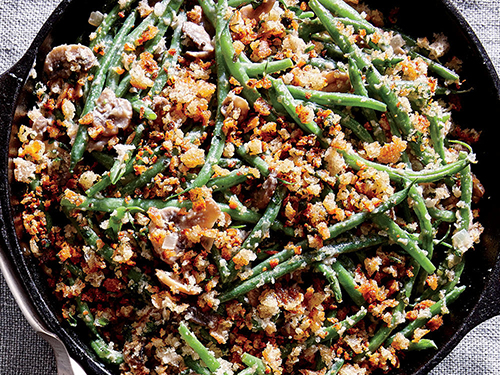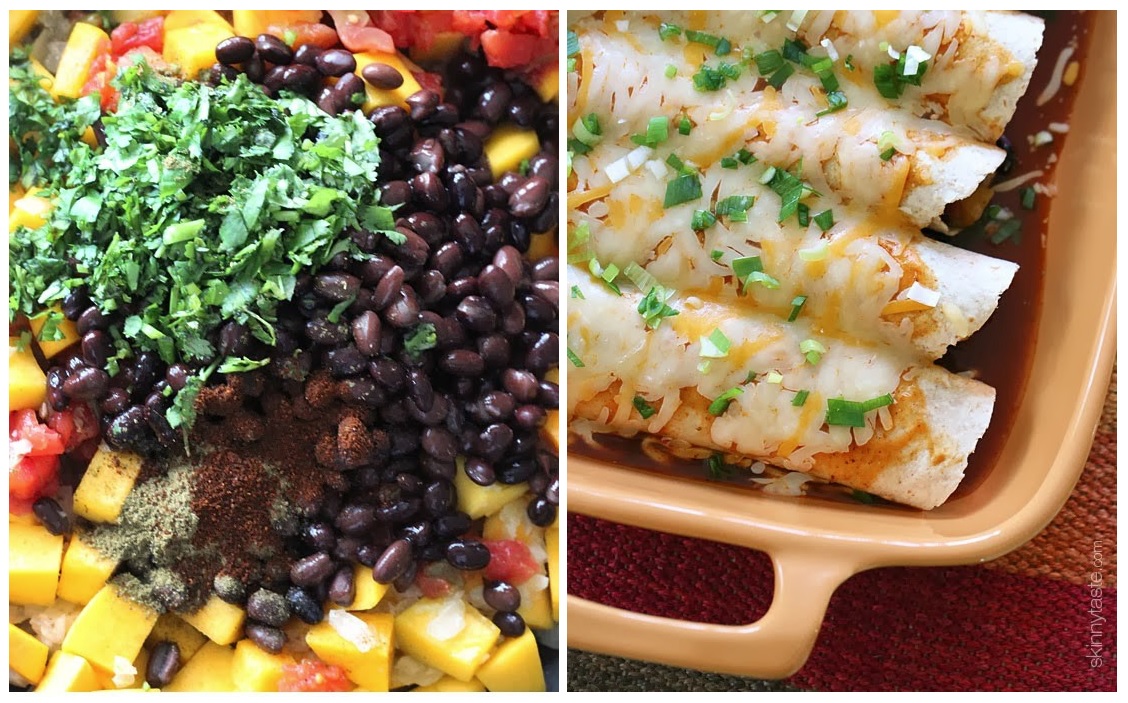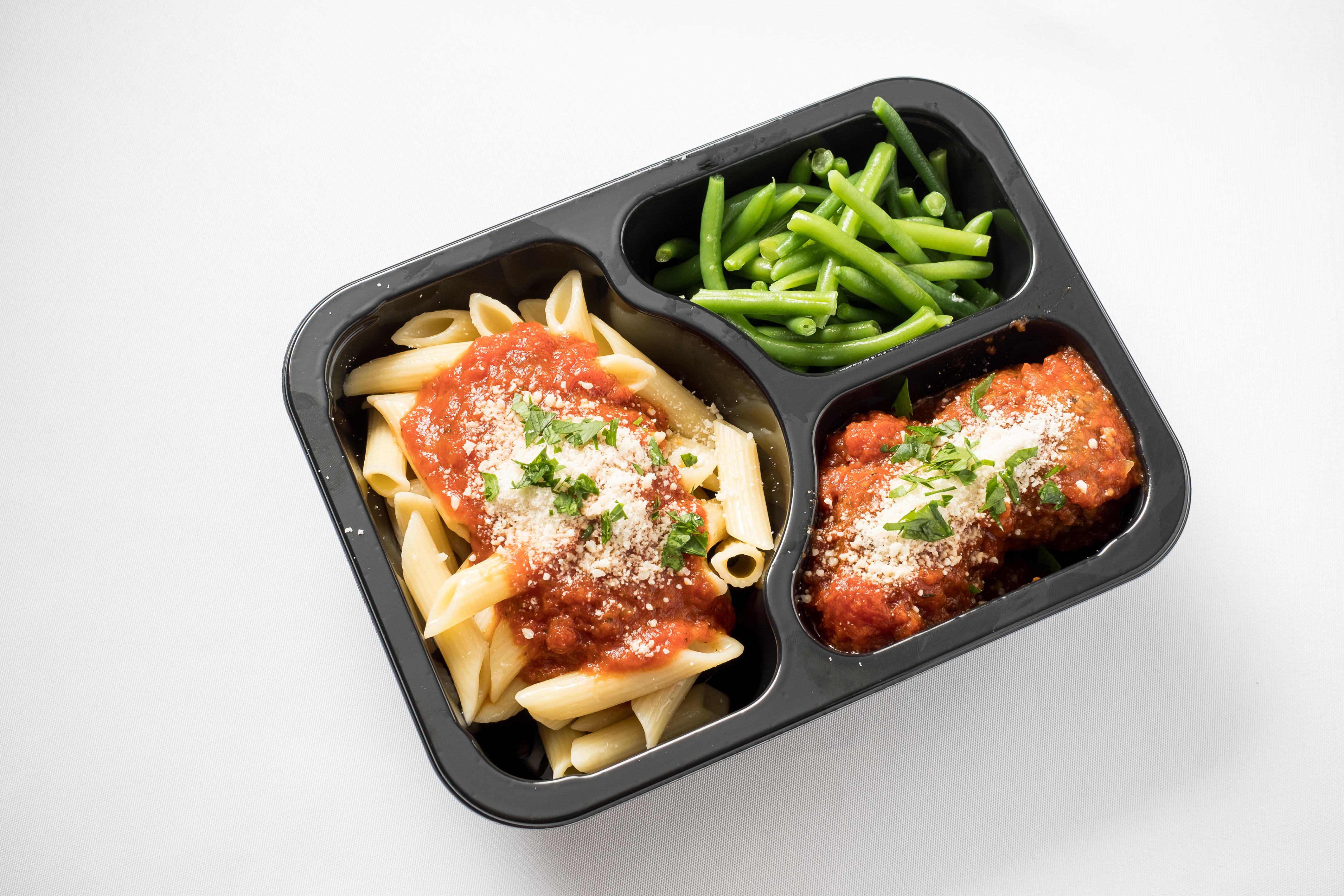 |
 |
 |
| Penne with Meatballs |
Waffles with Fruit |
Salmon |
This fall, MANNA’s clients may notice a few changes to their meals. After more than a year of drafting, planning, and perfecting, MANNA is taking our already delicious food to the next level by rolling out a new menu.
MANNA’s menu could be described as either an art or a science, depending on who you ask. In the nutrition wing of MANNA’s office, if you ask about our menu you’ll hear about caloric needs, macro and micro nutrients, and the technical nutrition standards we are committed to meeting to ensure that our meals will help our clients to heal. But if you talk to Eric Gantz, MANNA’s Director of Operations and culinary guru, it’s a different story. Eric talks about what it feels like to sit down for one of our meals. He talks about how it feels to have a piece of meat you cut with a fork and a knife, to have a dessert you look forward to and a hot breakfast to wake up to. These two perspectives meet in our kitchen, and together create a menu that is meticulously calculated for nutritional value, and crafted to be delicious, appealing, and fulfilling. Sitting down to a MANNA meal doesn’t feel like another step of treatment. It feels like the reprieve, a treat and a comfort in a challenging time. Our new menu makes sure of that.
To begin the process of creating the new menu, our nutrition staff, led by Nicole Laverty, RD, LDN, Senior Manager of Nutrition and Client Services, performed a comprehensive review of our previous menu. They calculated the daily caloric intake of a client who eats every meal MANNA brings each week, reviewed the amount of fat, protein, sodium, potassium, and calcium in the diet, and set goals for an optimal balance of nutrients.
On the other side of MANNA’s kitchen from the nutrition wing is Eric’s office, where a very different planning process was under way. Eric took clients’ feedback to heart, and sought to create the menu that our clients would take comfort in and enjoy. He wanted more of what he calls “center of the plate options,” which are those hearty, fork-and-knife meals that just make you feel good. If you listen to Eric talk about MANNA’s meals, you’ll notice that he’s the only one at MANNA who doesn’t always use the word “clients” to refer to the people we serve. He often refers to them as “guests,” a subtle hint at the way he thinks of our food; as a long-time restaurant chef and owner, Eric writes MANNA’s recipes as he would for patrons. In fact, every new MANNA recipe has been on the menu of a restaurant of his. Each meal that MANNA delivers begins with this care, with this pride, of a chef who values above all else providing a delicious meal to guests.
MANNA’s menu is on a six-week cycle, with no entrée appearing more than once. After meeting with the nutrition team and taking stock of the improvements they wanted to see, Eric wrote the menu by putting together recipes for each meal type (breakfast, lunch and dinner), in groups of 7 – for a week’s worth of meals – and adapting them in subtle ways that would help to meet nutrition standards.
This menu draft then went to the nutrition team. Using a program called Nutritionist Pro, MANNA dietitians and dietetic interns entered each recipe to assess nutritional qualities. This program evaluated each meal, and also each day’s meals and each week’s meals, to see the balance provided by the full menu. Then our dietitians relayed to Eric which meals were problematic and which weeks had balance issues, sending Eric back to the drawing board to make the necessary changes.
This evaluation and revision period was long and painstaking. The two sides of this process – nutrition and culinary – were uncompromising, in the best sense of the term. Neither would give up their commitment to creating the absolute best menu for our clients, and as a result, it took nearly a year to go through each individual meal, each day’s menu, and eventually the full six-week cycle. While at MANNA we like to say that everything fits, meaning that our nutrition and culinary teams can modify any recipe to fit our clients’ health needs, the reality is that there are some meals that simply wouldn’t work. Eric uses the example of an Asian inspired dish he wanted to include with a teriyaki sauce. There was just no way to create a teriyaki or soy-based sauce that could stay within our sodium guidelines, while still being proud of the taste of the meal. So rather than compromising the flavor, these unworkable meals were removed, and replaced with a different meal entirely. When this process finished, MANNA could almost call the menu ready.
The only remaining step was to create the modifications we use to tailor each clients’ diet to their health needs. Some of these modifications were easy; the pureed and soft food diets, for example, add a step to adjust texture but do not change recipes. On the other hand, the menu for a client with renal failure has more substantial changes. Using the nutrient profiles for each recipe already collected in Nutritionist Pro, MANNA’s nutrition team highlighted what needed to be changed from the standard diet to make it appropriate for a renal failure patient, and used substitutions or meal swaps to perfect it. After going through this process for the rest of our modifications, the menu was ready.
After more than a year of work, MANNA’s new menu is ready. Beginning with a gradual roll out, clients will begin to open their delivered meals to find the new, delicious recipes. As an added bonus, MANNA will now be able to print nutrition labels to be included with clients’ meals, so that clients can see the nutrient contents and learn how to use nutrition labels to make healthy choices. Each recipe, in its final form, is tested first in a batch for 250 servings, and then produced and packaged, as always, by the hundreds of caring volunteers who come to MANNA each week. They are then delivered by MANNA’s tireless distribution staff, with smiles and well wishes, to each client’s home, to provide nourishment, strength, health, and most of all, enjoyment and comfort.
Contributed by Kelly McGlynn























